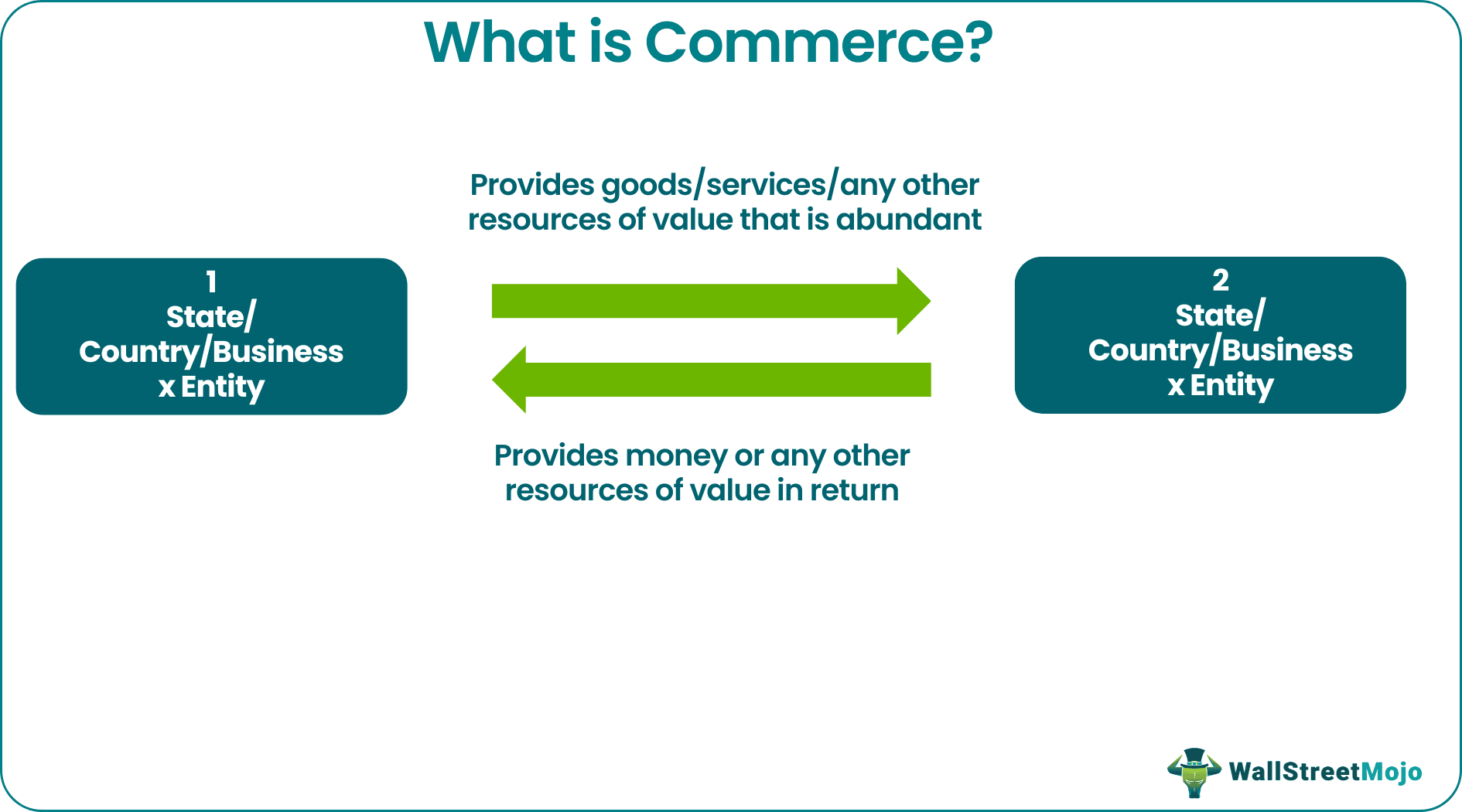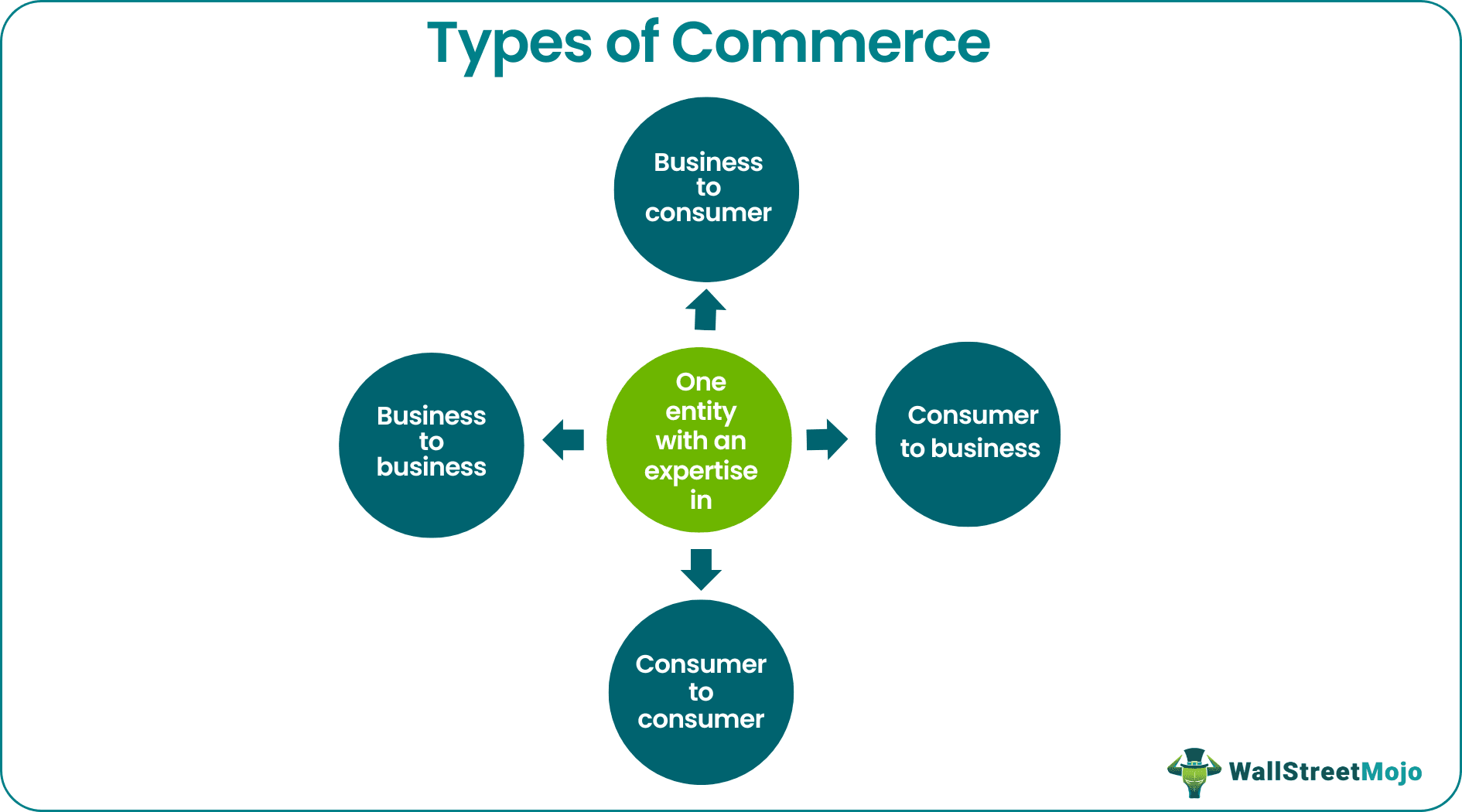Table Of Contents
What is Commerce?
Commerce is the accumulation of several transactions for a given industry. A transaction is a one-time event where an entity exchanges anything of value with a different entity. While transactions refer to the small scale of one single unit or customer, commerce is the large-scale activity between economic agents like countries and businesses.

is both a local and macro phenomenon. Cities try to increase commerce within their municipality to increase tax revenue and property value. Countries manage trade to grow their economy, lower unemployment rates, and import or export goods and services. More often than not, though, commerce relates to activity across nations.
Key Takeaways
- Commerce refers to a macroeconomic transaction of goods and services whereas a transaction is one specific item sold at a unique point in time.
- The US Department of Commerce manages all commerce domestically and abroad.
- There are four types of commerce: Business to Consumer, Business to Business, Consumer to Business, and Consumer to Consumer).
Commerce Explained
Commerce encompasses the entire distribution system of a business or the whole economy. A product or good must have an adequate distribution channel to efficiently get into the hands of the end consumer. Someone must also regulate these distribution channels ; otherwise, a business will be incentivized to continue to grow profit, potentially leading to the downfall of other involved parties.
In the US, the Department of Commerce manages all trading activity. It exists to promote and manage economic activity and business growth in the country. In addition, it works to ensure fair and reciprocal commerce and trade amongst nations, provides data to support it, creates a constitutionally acceptable trading system, and conducts research and development to develop beneficial industry standards.
Types of Commerce
In the age of online shopping, e-commerce has transformed the world of trade. Electric or digital commerce, known as E-Commerce, refers to the buying and selling of goods, products, and services over the internet (eg: Amazon). Social commerce refers to using networking sites like Facebook or Pinterest to conduct business (eg: Facebook marketplace). Finally, mobile commerce uses mobile apps or cellphones to conduct business (eg: Square mobile payments).

All trade is either commerce or e-commerce and can be categorized into the four types listed below:
#1 - B2C (Business to Consumer)
In this model, a business directly sells to its end-consumer. It includes most of the purchases we make daily, either online or at a store directly. For example, a coffee shop selling coffee that we walk in to buy is an example of B2C business model.
#2 - C2C (Consumer to Consumer)
This business model essentially is an online marketplace that allows consumers to sell or exchange their goods and services with one another. An example would be eBay, where it takes a commission or charges fees for buyers and sellers to use the platform and complete transactions. The exchange of products and services is strictly between the users or consumers.
#3 - B2B (Business to Business)
In a B2B model, a business sells its product or service to another business to either use as the end-consumer or resell it to the end-consumer. Starbucks selling large coffee machines ,bulk beans and pastries to a hotel for all their dining experiences would be considered a B2B transaction.
#4 - C2B (Consumer to Business)
This is a newer business model that allows individuals to sell goods and services to companies. It would include companies like Influence. Co which gives influencers the chance to pitch their services to brands. Another example is Upwork that gives freelancers a platform to share their skills with businesses who are looking for it.
Example
Let us take a closer look at the Starbucks example mentioned above. Starbucks must get their coffee beans from farmers all over the world. Then they have to purchase these coffee beans from other countries, package the coffee into branded containers, ship the coffee to stores all over the world. Therefore, Starbucks buying beans from farmers would be regarded as a B2B model.
Additionally, the act of creating stores, supplying the coffee and other products in the store, building a point of the sale payment system, staffing the store, advertising the Starbucks coffee, and producing sales are also considered commerce. Therefore, Starbucks selling coffee and other products to consumers would be a B2C model.

